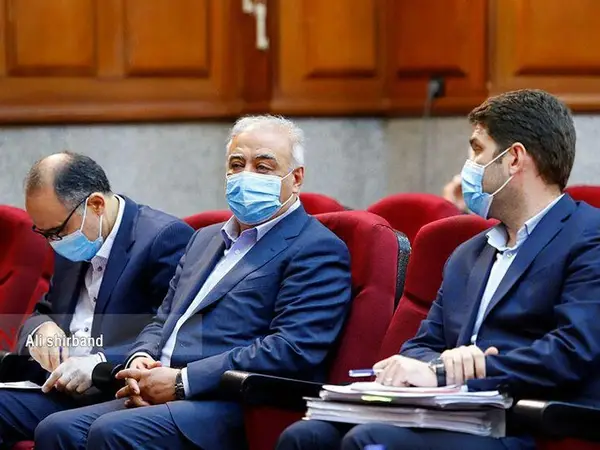Iran's president quickly took credit for state banks publishing names of major debtors, while critics say the list is not new and the move is a publicity stunt.
Four state-owned banks including Bank-e Melli, Iran's largest bank, published the list of their major debtors on Saturday, six months after the ministry of economy ordered them to publish quarterly lists of major debtors.
The ministry of economy defines a 'major debtor' as persons or entities that hold loans worth at least 10% of the bank's total resources but have not paid instalments for loans estimated to total around $10 billion in today’s exchange rate, but much more in US dollars when the loans were received.
"At first glance this can be interpreted as an important and positive step in battling corruption and recovering the money owed to state banks," Eghtesad Online (Economy Online) wrote Sunday, but it added that the lists are extremely vague and do not offer any details.
The lists show no information other than names of individuals and companies. It is very hard to trace the background of these individuals or the ownership of the companies, that appear to be subsidiaries or front companies set up by unknown firms, some connected with state enterprises with well-connected managers.
"None of the lists include information on the time the loans were granted to persons and entities that have a long record of getting loans and not paying back. It's also not clear if the banks decided on their own to grant the loans or were ordered [by other entities]. The information also does not reveal what the collateral for the loans were," Eghtesad Online wrote.
The publication also said it is equally important to know who endorsed the loans and bring them to account. It also said the purpose of publishing the lists is meant to enable the government to convince people that President Ebrahim Raisi is delivering on his election promises of fighting corruption and establishing transparency.
Officials say the move is proof that Raisi is delivering on his election promise of fighting corruption in the banking system. "One more of the President's promises was implemented. Melli Bank, the largest bank in the country, published the names of its major creditors," Government Spokesman Ali Bahadori-Jahromi said in a tweet Saturday.
Others such as Malek Shariati, a Tehran lawmaker in the parliament, say the publication of names of major creditors is proof that the administration and parliament are steadfast in establishing transparency and battling corruption.
Based on the budget bill, the government was mandated with publishing all information on major creditors on the central bank’s.
In 2017, outspoken reformist lawmaker Mahmoud Sadeghi published a list of major debtors of Sarmayeh Bank who has defaulted. In some cases, he said, the collaterals for the loans had been evaluated at a much higher price than their real worth.
Sadeghi called the phenomenon widespread in Iran 'crony capitalism', meaning those who have connections with centers of power could easily get loans that others find extremely difficult to secure. Many of the debtors had received low-interest, subsidized loans from banks.
Major debtors to banks with bad credit have allegedly used the money to speculate in the housing, foreign currency and gold markets rather than invest in production and have thus contributed to higher inflation.
